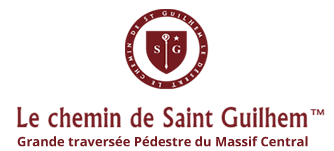Patrimoine culturel & naturel
Voir « Patrimoine culturel & naturel » sur la carte interactive
Cascade du Déroc
Patrimoine naturel
Nasbinals
Itinéraire principal
Au milieu des vastes étendues de l’Aubrac granitique lozérien, la cascade du Déroc domine de 30 mètres la petite vallée glaciaire du ruisseau de Gambaïse.
La Domerie d’Aubrac
Patrimoine bâti
Saint-Chély-d'Aubrac
Itinéraire principal
« C’était un lieu d’horreur et de profonde solitude. » Cette inscription empruntée au cantique de Moïse était gravée sur le fronton de la porte de la façade occidentale du monastère d’Aubrac.
Le neck de Belvezet
Patrimoine naturel
Saint-Chély-d'Aubrac
Itinéraire principal
Le plateau de l’Aubrac est un massif volcanique ancien (5 à 9 millions d’années). Certains sites, comme le neck de Belvezet, témoignent de l’ancienne activité volcanique du plateau.
La voie romaine
Patrimoine bâti
Saint-Chély-d'Aubrac
Itinéraire principal
La commune de Saint-Chély-d’Aubrac (Aveyron) est traversée d’ouest en est par une ancienne voie qui reliait, à l’époque romaine, Rodez – Segodunum, chef-lieu des Rutènes – et Javols – Anderitum, chef-lieu des Gabales.
Le pont des Pèlerins
Patrimoine bâti
Saint-Chély-d'Aubrac
Itinéraire principal
Pour les pèlerins se rendant à Compostelle tout comme pour ceux qui se rendaient à Saint-Guilhem-le-Désert, le Pont des pèlerins, construit à la fin du XIVème ou au début du XVème siècle, était le seul point permettant de franchir à pied sec la Boralde de Saint-Chély-d’Aubrac.
Le signal de Mailhebiau
Patrimoine naturel
Trélans
Itinéraire principal
Le signal de Mailhebiau est le point culminant de l’Aubrac, à 1 469 m d’altitude.
La Canourgue
Patrimoine culturel
La Canourgue
Itinéraire principal
Développée autour d’un monastère au VIIème siècle, le village de La Canourgue s’ouvre sur la vallée du Lot. Toute la vie s’est organisée dès le Moyen Âge aux abords de l’Urugne (affluent du Lot). L’eau est présente partout, s’engouffrant sous les maisons avant de rejaillir dans l’une des nombreuses fontaines.
Sainte-Énimie
Patrimoine culturel
Gorges-du-Tarn-Causses
Itinéraire principal
Située dans les gorges du Tarn, Sainte-Enimie (dans la commune nouvelle de Gorges du Tarn Causses) est un village d’allure médiévale, tout en vieilles ruelles pavées de galets du Tarn et en passages voûtés, parsemée de larges escaliers et de jolies terrasses qui participent généreusement à son charme.
Voir « Patrimoine culturel & naturel » sur la carte interactive

